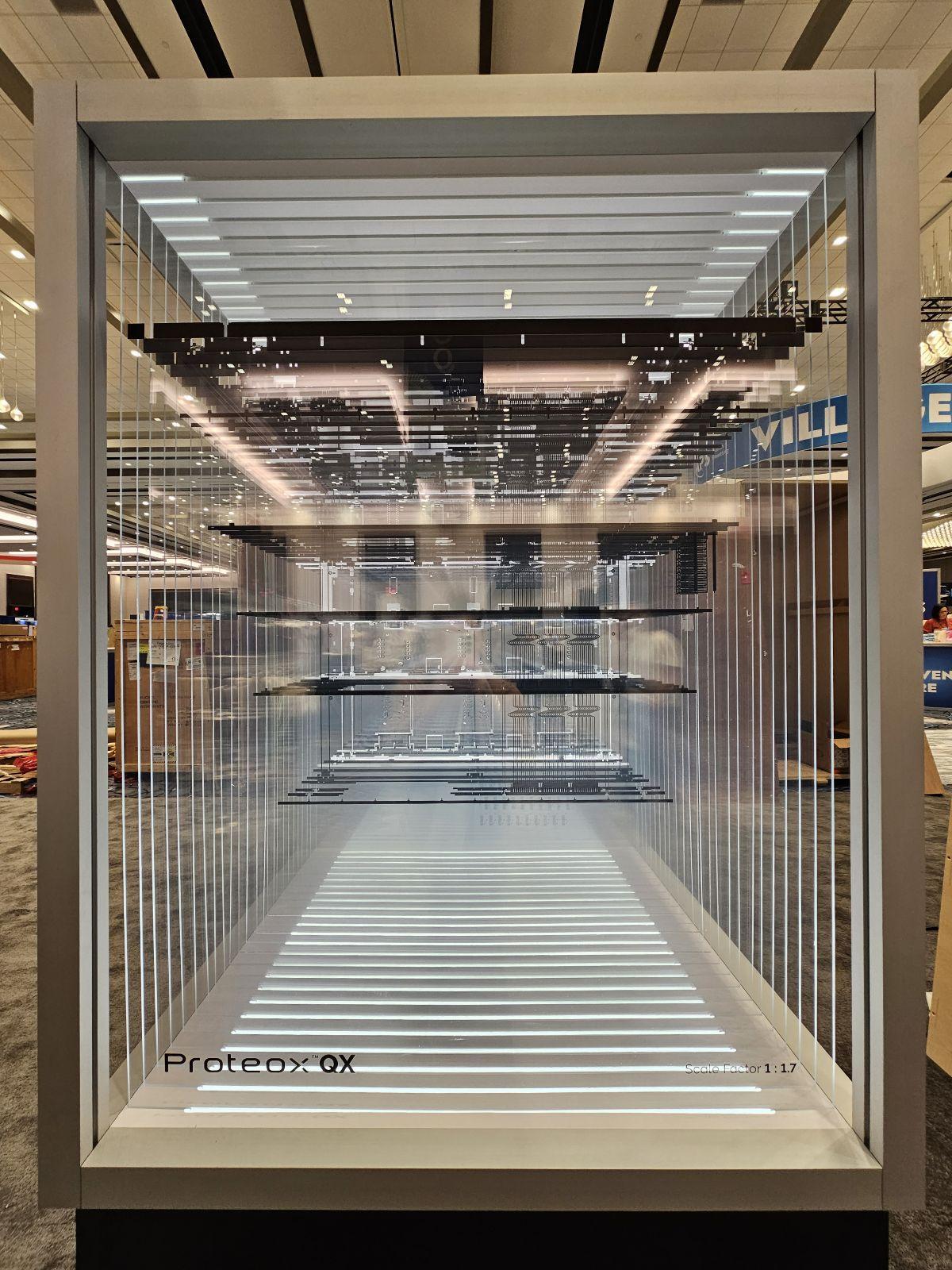Applications
 Part of the Oxford Instruments Group
Part of the Oxford Instruments Group
Expand
Collapse
Author - Matt Martin
The unique model we created of the ProteoxQX is now on show in our Oxfordshire factory

What do you get when you combine a glass sculpture of an Egyptian mummy, the launch of our largest dilution refrigerator and a creative marketing team? For us, an 8 foot sculpture of the ProteoxQX, Oxford Instruments’ latest addition to the Proteox family. As the model goes on show in our factory, I wanted to share the story behind its creation and thank the designers, engineers, artists and physicists who brought it to life.
The ProteoxQX is a landmark achievement for us. Discussions about a large Proteox system started several years ago in close consultation with our customers. We had many conversations along the way and the same few priorities emerged in each of these meetings: scalability, functionality, accessibility and flexibility. To meet these needs the QX system measures over 3m tall and over 1.5m wide and is designed to easily connect in modules to be as large as any customer might require. When the doors are open and the radiation shields are off the accessible space in just one chamber is huge.
We knew we wanted to show the ProteoxQX at APS this year and we wanted something 3D that would help people visualise its scale. During the design process we modelled the system in its full size in wood, and while it worked well to show the size, it lacked the wow factor that the solution deserves. For months, ideas and designs for an exhibition model were kicked back and forth.
Then one day in the summer, we attended an event in Oxford and a few members of the team visited the Ashmolean Museum before dinner. In one of the exhibits stands a reconstruction by artist Angela Palmer of a 2,000-year-old Egyptian mummy as a three-dimensional drawing sketched onto sheets of glass. If you walk around the mummy, you see it from different angles and perspectives. We were inspired and the idea for the ProteoxQX depicted through twenty five sheets of six metre squared perspex was born.
As a self-proclaimed techie, I, like many engineers, love taking cues from other areas, disciplines and movements to influence and inspire our designs. The precision of Palmer’s work was the perfect way to express the level of care that went into designing the QX system. Our designers created a 60% scale model replica. The CAD designs etched onto the perspex are the ones our teams are building against; the plinth at the top is the genuine industrial design; the colour of the plinth is the real colour of the system, and the space below is representative of the vacuum space a QX owner will have available to them.
The model worked brilliantly at APS, stopping visitors in their tracks. In our factory, its job is just as important: inspiring the next steps of our product delivery journey. It’s a testament to the team’s hard work, ingenuity and the creativity inherent in engineering.